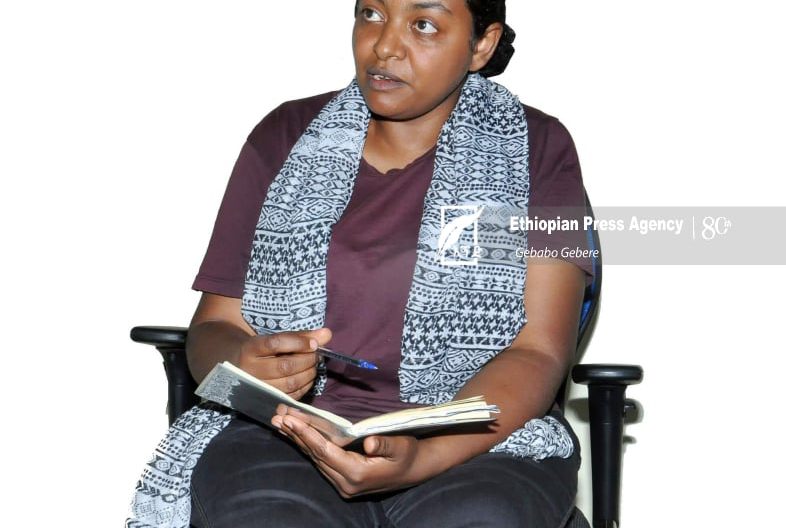
Climate change affects all living organisms; it has done so in the past and will do so in the future. However, current climate change is exceptional both in terms of the rate of change and the impact of multiple types of global change on individuals, populations, species, and ecosystems. Effects of Climate Change on Birds provides an exhaustive and up-to-date synthesis of the science of climate change as it relates to birds. Compared with any other class of animals, birds provide more long-term data and extensive time series (some dating back more than 100 years), a more geographically and taxonomically diverse source of information, and a longer tradition of extensive research.
Ethiopia is one of the countries of the world rich in biodiversity. The altitudinal difference with the highest peak at Ras Dashen (4620 m above sea level) and the minimum 126 meters below sea level in the Afar depression is the main reason that makes Ethiopia one of the very few countries that are rich in biodiversity. The country has various endemic animals, mammals, and birds. More specifically, Ethiopia hosts two of the world’s 34 biodiversity hotspots, namely; the Eastern Afromontane and the Horn of Africa hotspots.
Weldemariam Tesfahunegny in his article in 2016 entitled “A catalogue for endemic birds of Ethiopia” stated that the wildlife biodiversity of Ethiopia assists more than 926 birds with 24 endemics. Because Ethiopia is the 27th largest country in the world with an area coverage of 435,071 square miles. This large size makes Ethiopia ecologically diverse ranging from arid areas to tropical forests in the south. The nation enjoys a high level of endemics with 31 species of endemic mammals and over twenty species of endemic birds.
Nevertheless, Ethiopia’s some biodiversity resources are moving to extinction. Extinct occurs when a species, family, or another group of animals or plants has no living members or is no longer in survival. Extinction is to vanish a kind of organism or a group of kids (taxon), usually a species. The moment of extinction is by and large reflected to be the death of the last individual of the species, nonetheless, the capacity to breed and recover may have been lost before this point.
Extinction may have various causes, and it may happen when a species dies out from cataclysmic events, evolutionary problems, or human interference. Human beings could also cause other species to become extinct by hunting, overharvesting, introducing invasive species to the wild, polluting, and changing wetlands and forests to croplands and urban areas. Besides, extinction happens anywhere and everywhere if humans don’t take cautions plan for their day-to-day activities.
Ethiopian Biodiversity Institutions Ornithologist Amare Gibru told The Ethiopian Herald that in Ethiopia, Birds are estimated about 926 which 24 of the species are endemic. Among them, The Liben Lark, among others, is critically endangered.
It was believed that the Lark once used to be found in the Ethiopian Somalia Region, Borena, and Somaliland. However, the Lark species is on a verge of extinction. Some years back the population of the habitant Lark has estimated from 50 to 250 which many of which are Cooks and the number of Hens is less, he said.
People agree on the vulnerability of the bird, but the name is debatable. Some call it “Liben Lark” while others call it “Sidamo Lark.” Kotebe Education University Biology Department Assistant Professor Bruktawit Abdu, who did her PhD dissertation on Ornithology, has put the name the Sidamo or Liben Lark the same. And the name can be used interchangeably.
She also told the Ethiopian Herald that the name “Sidamo Lark or Liben Lark” was the same. The Lark is an endemic bird that is found only in Ethiopia. The Lark is previously known as Sidamo Lark because there was a province called Sidamo. But with the change of administration border in Ethiopia for the last 27 years and the name, Sidamo Lark has changed into Liben Lark. The name has changed through several discussions with the community living in the Borena area where the bird is found. So, the name comes from the Liben Plain. Whether the Bird is named Sidama Lark or Liben Lark, seems to be extinct soon.
The Lark is dependent on grassland which is 5 to 15 centimetres tall and the annual rainfall of 300-400 mm (12-16 in) is the bird’s preferred habitat. Apart from the Liben plain, there is no similar vegetation for over 200 km, meaning the lark has nowhere else to go, she explained.
The Lark is critically endangered and currently, 80 per cent of the population of the Lark has declined due to various reasons such as the decline of the grasslands in the area, the expansion of farming land, even the existing grassland is covered by bushes, people from outside the inhabitant is coming to look for farming land and turned the area into farmland, and so on. It is obvious that extinction is a very bad thing for endemic birds like Sidamo Lark and unless immediate action is taken to save it, the bird will disappear, she noted.
Apart from agricultural practices, pastoralism, and invasive weeds, threats including wildfire, severe weather events, and climate change are reasons for the extinction of the lark. These reasons, further, degraded the quality of the area which severely affects the life of the Lark, she added.
According to studies, the Sidamo lark (Heteromirafra sidamoensis) is an enigmatic species, and one of the most ancient types of lark known anywhere. Discovered by scientists in 1968, the bird was only seen once in the following 25 years. If the planet loses this species, then it loses an important ancestral link in the evolution of the entire radiation of lark species.
The Liben or Sidamo Lark is indeed a kind of bird that lives only in the Liben Plain. Birds, including the Liben Lark, are important to human life. Saving and conserving birds from extinction are important things to this planet since birds are indicators of quality life, clean water, an unpolluted environment, and so on.
Besides, birds are important specious for many ecosystems. They have been playing a vital role in controlling pests, acting as pollinators, and maintaining island ecology. They are important to humans in many ways, such as serving as a source of food and providing fertilizer in agricultural settings.
Therefore, it is very important to apply a conservation approach to save the Sidama Lark. To do so, the concerned body should do researches on the existing population ecology of the species, and implement other threat reduction strategies, she noted.
Moreover, the way forward towards conserving the Liben Lark is to work closely with local Borana people to improve the quantity and quality of grassland habitat by reducing grazing pressure, agricultural expansion, and scrub encroachment.
It is also essential to identify the Liben Lark breeds seasons and work on it to save it from extinction. The breeding time of the Liben Lark is the Ethiopian winter season. During this season protecting the area from farming, human activities, and grazing is important.
According to Assistant Professor Bruktawit, Borena is a place where it is known for its cattle. The place is rich in animals breeding. Hence, the people need grazing lands for their animals. Due to this reason, many people think that protecting or providing grassland for the Lark to breed would affect the life of the cattle. But it is not true.
“Winter is the lark breeding season. Then, it is possible to protect the grassland during the Lark breeding season and give the grass to the cattle after the season is over. So, breeding cattle and saving the Lark from extinction can go together harmoniously without affecting one another” she stated.
Birds are indeed indicators of quality of life. Apart from attracting tourists and generating incomes, the existence of birds in one area has shown the quality of the place. The government, the communities, stakeholders, and environmental activists, hence, should raise their voice to the Sidamo or Liben Lark before it is too late. Because saving birds from extinction is saving the planet.
BY EPHREM ANDRAGCHEW
THE ETHIOPIAN HERALD SUNDAY EDITION NOVEMBEBER 14/2021




